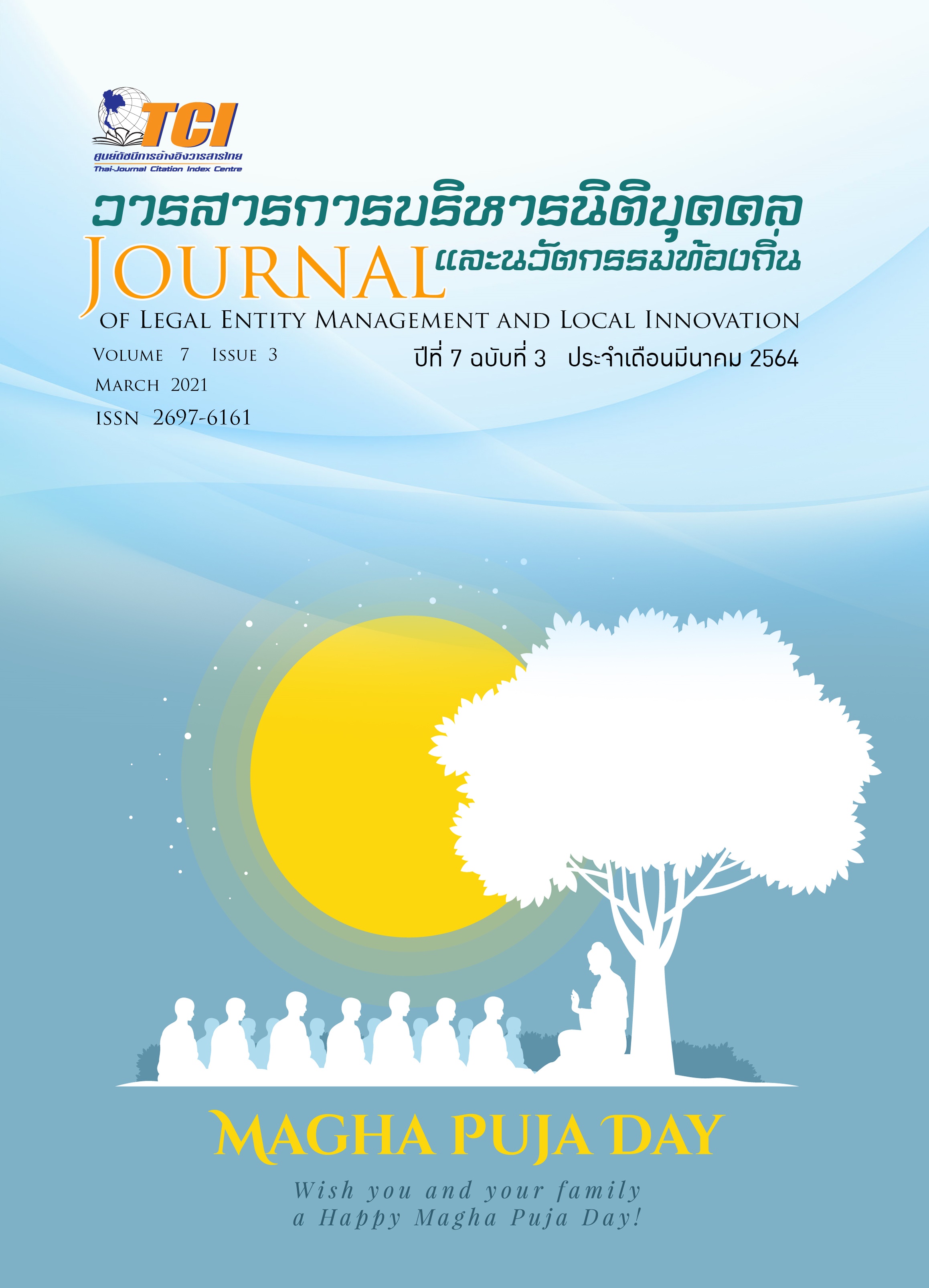LEADERSHIP IN IMPLEMENTING DIGITAL TECHNOLOGY FOR ADMINISTRATION OF ADMINISTRATORS IN PONGHAI-NAMCHAN GROUP UNDER THE BUNGKARN PRIMARY EDUCATIONAL SERVICE AREA OFFICE
Keywords:
Leadership, Implementing Digital Technology for AdministrationAbstract
The objectives of this research were to examine leadership in implementing digital technology for administration of the administrators in Ponghai-Namchan Group under the Bungkarn Primary Educational Service Area Office and to make a comparison of the leadership in implementing digital technology for administration of the administrators in Ponghai-Namchan Group under the Bungkarn Primary Educational Service Area Office as classified by gender, age and educational level. The study sample comprised teachers and educational personnel in Ponghai-Namchan Group under the Bungkarn Primary Educational Service Area Office in academic year 2020, totaling 135 persons, selected by using purposive sampling. The research instrument was a questionnaire with 5-level rating scale constructed by the research with the IOC ranging from 0.67 to 1.00 and the reliability of 0.84. The statistics used for analyzing the collected data were percentage, mean, standard deviation, t-test and F-test with matched pair comparisons by Scheff Method. The research findings revealed that the leadership in implementing digital technology for administration of the administrators in Ponghai-Namchan Group under the Bungkarn Primary Educational Service Area Office was performed at high level as a whole. After item analysis, it was found that every aspect of the administrators’ leadership was performed at high level. The mean scores listed in order from the highest to the lowest included inspiration, realization of individualized consideration, intellectual stimulation and idealized influence or charisma. According to the comparison results, it was found that the leadership in implementing digital technology for administration of the administrators in Ponghai-Namchan Group under the Bungkarn Primary Educational Service Area Office, as classified by gender, age and educational level, was not different at the .05 level of significance which was not in accordance with the research hypothesis determined.


